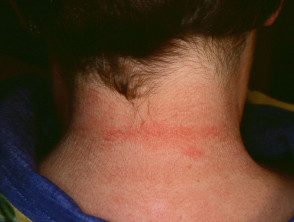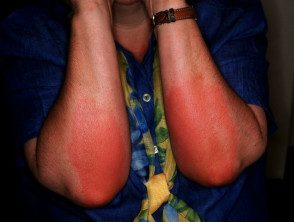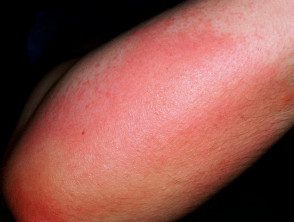What is pressure? urticaria?
Pressure urticaria is a form of chronic inducible urticaria characterized by the appearance of cure me angioedema after pressing the skin.
- Pressure urticaria can occur immediately after a pressure stimulus or, more commonly, in delayed pressure urticaria, after a delay of 4 to 6 hours.
- Injuries can be induced by a variety of stimuli including standing, walking, wearing tight clothing, or sitting on a hard surface.
- Pressure urticaria can occasionally be aggravated by heat, aspirin, or menstruation.
Pressure urticaria is rare but probably not rare. It is a chronic disease with an average duration of 9 years. The peak age of onset is in the 20s and 30s. Also called delayed pressure urticaria / angioedema.
Pressure urticaria

Pressure urticaria

Pressure urticaria

Pressure urticaria
What are the symptoms of pressure urticaria?
the bump in pressure urticaria it consists of redness and swelling of the skin and subcutaneous tissue injuries can last from 8 to 72 hours.
- The hands, feet, trunk, buttocks, legs and face are the most affected.
- Riches can be accompanied by fever, discomfort, fatigue and occasionally chills, headache and general joint pain.
- The affected areas may be resistant to the development of new lesions for 1-2 days.
- Up to 60% of patients with pressure urticaria also have chronic urticaria, immediate and / or delayed dermography, and / or angioedema.
Pressure urticaria has a significant adverse impact on the quality of life of patients, with significant limitations in daily activities, such as walking or standing for a long time. It can be disabling in patients who perform manual labor.
What Causes Delayed Pressure Urticaria?
The cause of pressure urticaria is unclear, but it is likely a autoimmune disease. Cells called mast cells they are an important part of the process. Mast cells are tissue cells that contain chemicals, including histamine, which cause healing.
What investigations should be done in delayed pressure urticaria?
The diagnosis of delayed pressure urticaria is made clinically. It can be confirmed if there is a delay in healing after a standardized pressure stimulus. This is often painful. In immediate pressure urticaria, scarring will appear within minutes of stimulation.
A blood count may show an increase in the white blood cell count and ESR, but it is often normal.
A skin biopsy of delayed pressure urticaria shows inflammatory infiltrators They vary with the age of wealth. No vasculitis It is found.
Management of delayed pressure urticaria
The results of treating pressure urticaria are relatively disappointing.
- Reduce pressure stimuli as much as possible.
-
Antihistamine help control Associated chronic urticaria, but rarely reduces pressure urticaria.
- The ultra-powerful current clobetasol propionate with corticosteroids may reduce inflammation. Regular use can lead to thinning of the skin. Milder topical steroids are not beneficial.
- Systemic Corticosteroids produce variable responses, and long-term use is associated with many possible adverse side effects.
- Other possible therapies include non-steroidal anti-inflammatory drugs (NSAID), colchicine, dapsone, sulfasalazine, and montelukast.
-
Cyclosporine, methotrexate, and intravenous gamma globulin have been used in a small number of patients with severe and refractory disease.
- Tumor necrosis Alpha factor inhibitors have been reported to be beneficial in some patients.
